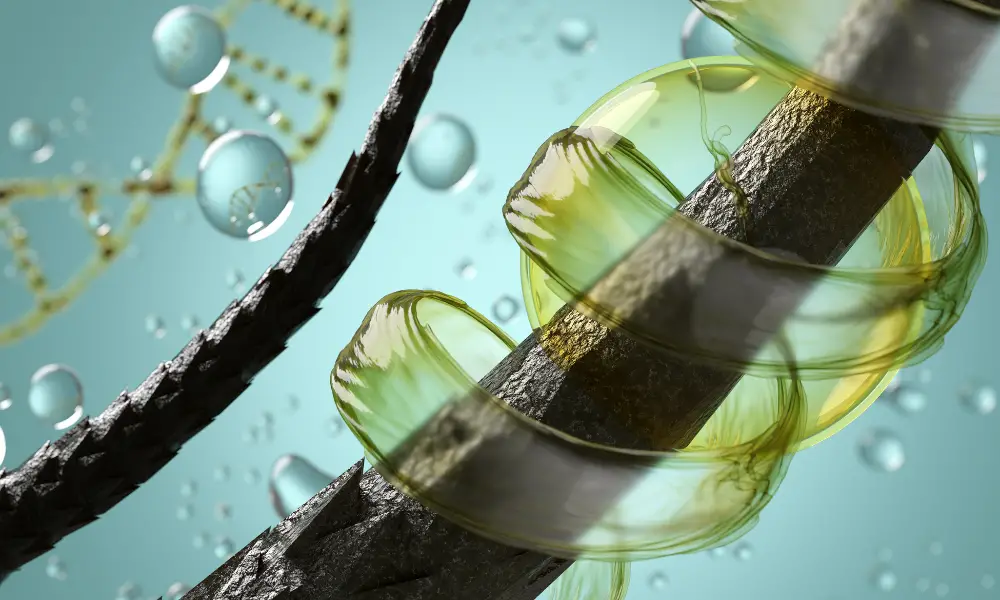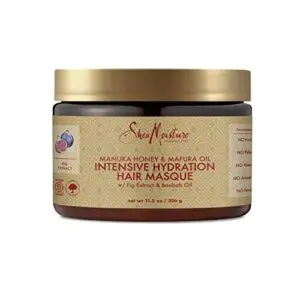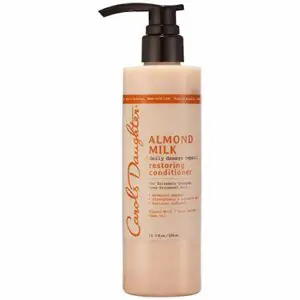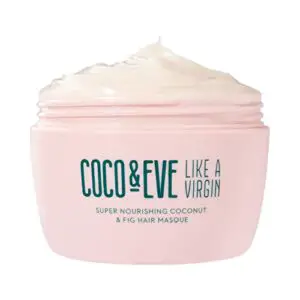What Is The Best Deep Conditioner for Low Porosity Hair?
We’ve tested and reviewed the best deep conditioners for low porosity hair on the market. Our top recommendation is the SheaMoisture Manuka Honey & Mafura Oil Intensive Hydration Hair Masque.
1. SheaMoisture Manuka Honey & Mafura Oil Intensive Hydration Hair Masque - This rich masque provides intense hydration for dry, damaged hair. [ SAVE 14% ]
2. Carol's Daughter Almond Milk Ultra-Nourishing Hair Mask - This protein-free mask hydrates and softens hair while preventing breakage.
3. Coco & Eve Coconut and Fig Hair Masque - This nourishing mask restores shine and softness while promoting healthy hair growth. [ SAVE 25% ]
4. Jessicurl Deep Conditioning Treatment - This treatment nourishes and hydrates dry curls while taming frizz.
5. Rizos Curls Deep Conditioner - This hydrating conditioner is perfect for curly, coily, and wavy hair. [ SAVE 25% ]
6. Giovanni 50/50 Balanced Hair Moisturizer Conditioner - This lightweight conditioner restores your hair's natural moisture levels. [ SAVE 29% ]
7. Carol's Daughter Black Vanilla Deep Conditioning Smoothie - This protein-free smoothie deeply moisturizes and softens hair.
8. As I Am Hydration Elation - This luxurious deep conditioner provides intense moisture and strengthens weak hair.
9. Alikay Naturals Avocado Moisture Repairing Mask - Enriched with avocado oil, this mask nourishes and repairs damaged strands.
10. Curl Junkie BeautiCurls Argan & Olive Oil - A blend of olive and argan oil provides deep hydration and shine.
Understanding Low Porosity Hair
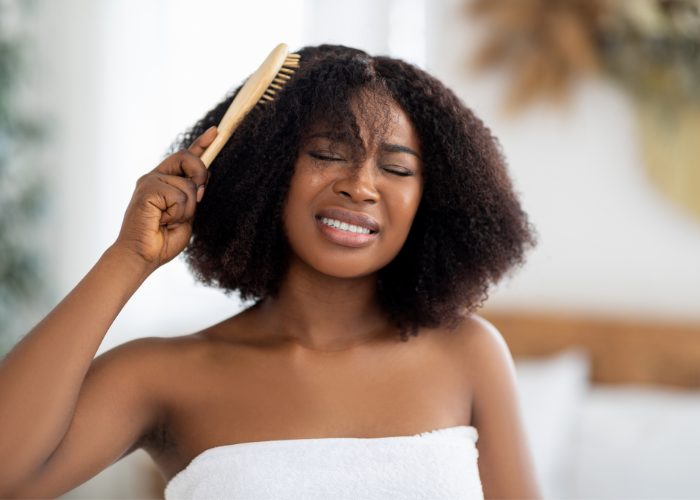
Low porosity hair is characterized by tightly packed cuticles, making it difficult for water and products to be absorbed. Understanding your hair type is essential for proper hair maintenance and achieving the best possible outcome. The hair cuticles in low porosity hair are stacked like shingles on a roof, creating a barrier that prevents moisture and product absorption. This can lead to common problems faced by people with low porosity hair, such as dryness, difficulty absorbing products, and hair that appears frizzy, especially in curly hair.
If you’re unsure whether you have low porosity hair, there are several ways to identify it. Visual examination can give you clues, such as shiny hair with dry ends and a tight hair cuticle layer. Another method to determine hair porosity is the “float test,” which involves placing a clean, dry strand of hair in a bowl of water. Floating of a hair strand is an indication that you have low porosity hair. Such type of hair typically takes longer to get saturated with moisture and dries slower than other strands.
Recognizing the unique characteristics of low porosity hair is crucial for making the right changes to your natural hair regimen and keeping your hair healthy. It’s also important to do a trial test before applying any deep conditioning treatment to prevent any unwanted reactions.
The key to managing low porosity hair lies in selecting the right deep conditioners that can penetrate the tight cuticle layer, provide moisture, nourishment, and protection, and maintain a healthy balance between protein and moisture. In the following sections, we’ll dive deeper into the benefits of deep conditioning, the key ingredients to look for, and the top 10 deep conditioners for low porosity hair.
Signs of Low Porosity Hair
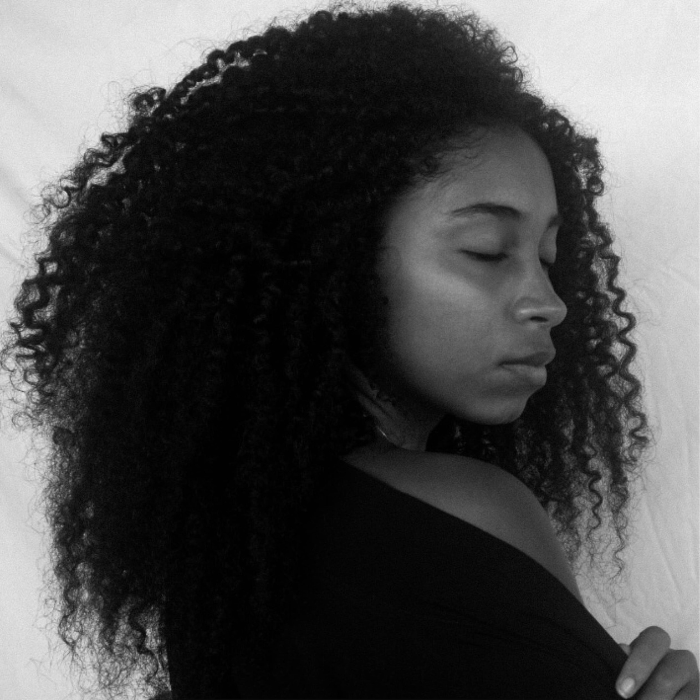
Identifying low porosity hair is essential for understanding how to care for it properly. There are certain signs and symptoms that can indicate low porosity hair. Virgin, non-chemically treated hair with no history of harsh chemical treatments is one potential indicator of low porosity hair. Another common sign is dry ends, which can result from the hair’s inability to absorb moisture effectively.
A shiny appearance, especially in curly hair, can also be an indication of low porosity hair, as the tight cuticle layer reflects light more easily than a damaged or open cuticle layer. Frizziness is another common symptom, as the hair struggles to retain moisture, leading to a lack of definition and smoothness in the hair strands. In addition, low porosity hair may never feel moisturized, even after applying various hair products.
By recognizing these signs of low porosity hair, you can make informed decisions about the best hair care practices and products to use, ultimately leading to healthier, more manageable hair.
Benefits of Deep Conditioning for Low Porosity Hair

Deep conditioning is highly recommended for low porosity hair, as it can penetrate the cuticle layer, deposit beneficial oils and proteins, and fill in broken gaps to strengthen and hydrate the hair for better length retention. Some popular deep conditioners, such as Mielle Organics Babassu & Mint Deep Conditioner, can help protect and maintain the hair’s natural protein and moisture balance, revitalize the scalp, and encourage hair growth.
Heat therapy plays a crucial role in enhancing the effectiveness of deep conditioners for low porosity hair. Adding heat to your deep conditioning routine, such as using a heated cap, steamer, or hooded dryer, can help open up the hair cuticles, allowing the deep conditioner to penetrate deeper into the hair strands. It’s important to leave the deep conditioner on for up to 20 minutes for maximum benefits.
In addition to providing hydration and strength, deep conditioning can also help address common low porosity hair concerns, such as frizziness and dryness. For example, Jessicurl Citrus Lavender Deep Treatment can nourish and hydrate dry curls and help tame frizz. Jamaican Black Castor. Oil is another popular ingredient for low porosity hair, as it can help reduce hair breakage, detangle, and provide hydration for noticeably softer curls.
Key Ingredients for Effective Deep Conditioners
When selecting deep conditioners for low porosity hair, it’s important to look for specific key ingredients to ensure maximum effectiveness. These ingredients include humectants, emollients, cationic actives, and proteins. Humectants, such as glycerin, propylene glycol, and butylene glycol, help deliver water molecules to the hair, keeping it hydrated. However, their effectiveness relies on the humidity outside, and they can leave your hair feeling a bit tacky and heavy.
Emollients are another key ingredient to look for in deep conditioners for low porosity hair. Liquid oils with a light texture or shea butter are ideal for providing hydration without weighing the hair down. Cationic actives, molecules with a positive charge that bond with the negative sites of keratin amino acids, help make hair softer, reduce static flyaway, and control frizz.
It’s crucial to avoid protein overload in low porosity hair, so deep conditioners should not have protein ingredients in the first five ingredients listed. Protein-free deep conditioners help prevent buildup and are better at penetrating the hair shaft and providing the necessary moisture and nourishment.
How to Apply Deep Conditioners to Low Porosity Hair
Applying deep conditioners to low porosity hair is a process that requires careful attention to ensure maximum benefits. Start by pre-pooing your hair, which involves using steam from the shower to help raise the cuticles and allow the deep conditioner to penetrate deeper into the strands. After pre-pooing, apply the deep conditioner to your hair, ensuring even distribution.
Next, use heat therapy to enhance the effectiveness of the deep conditioner. Cover your hair with a shower cap and either sit under a hooded dryer or steamer for around 20-30 minutes, or use a heating cap or warm towel. This step is important for low porosity hair, as it helps the product penetrate the hair cuticles more effectively.
After the heat therapy, rinse your hair with cold water to help seal in the moisture and lock in the product for maximum benefits. Finally, style your hair as desired. By following these steps, you can ensure that the deep conditioner is effectively absorbed by your low porosity hair, providing optimal hydration and nourishment.
The Importance of Protein-Free Deep Conditioners
Protein-free deep conditioners play a crucial role in maintaining the health of low porosity hair. They help balance protein and moisture in the hair, preventing issues such as protein sensitivity and protein overload. Signs of protein sensitivity include stiff and dry hair, even after washing and deep conditioning.
Protein overload occurs when there is an excess of protein in the hair, causing it to feel hard, stiff, and dry. By using protein-free deep conditioners, you can avoid these issues and ensure your low porosity hair receives the right balance of moisture and nourishment it needs.
When selecting a deep conditioner for your low porosity hair, always check the ingredients list to ensure it is protein-free. By choosing the right deep conditioner, you can effectively address common low porosity hair concerns and maintain a healthy balance between protein and moisture.
Tips for Maintaining Low Porosity Hair
Maintaining low porosity hair requires a consistent hair care routine and the use of appropriate products. One essential tip is to use a clarifying shampoo at least once a month to remove product build-up and keep your hair clean and healthy. Avoiding product build-up is important for low porosity hair, as it can impede moisture absorption and lead to further dryness and damage.
Another valuable tip for maintaining low porosity hair is to use indirect heat options, such as heated caps, steamers, or hooded dryers, when deep conditioning your hair. These heat options help open up the hair cuticles, allowing the deep conditioner to penetrate deeper and provide maximum benefits.
Consistency is key when it comes to caring for low porosity hair. Establishing a regular cleansing and conditioning routine will help ensure your hair remains healthy, hydrated, and manageable. By following these tips and using the right products, you can effectively maintain your low porosity hair and enjoy the benefits of healthy, beautiful locks.
Addressing Common Low Porosity Hair Concerns
Low porosity hair comes with its unique set of concerns, such as coconut oil allergy, protein sensitivity, and product build-up. Addressing these concerns requires a careful selection of hair care products and practices.
For those with a coconut oil allergy, consider using alternative lightweight oils, such as olive or jojoba oil, to provide hydration without causing irritation. If you have protein-sensitive hair, ensure you choose protein-free deep conditioners to avoid protein overload and maintain the right balance between protein and moisture.
To tackle product build-up, use a clarifying shampoo regularly and avoid using heavy products that can weigh down your hair and impede moisture absorption. Diluting your conditioner and using products specifically designed for low porosity hair can also help address this issue.
By paying attention to these common low porosity hair concerns and making the necessary adjustments to your hair care routine, you can ensure your hair remains healthy and well-nourished.
Summary
In conclusion, understanding low porosity hair and selecting the right deep conditioners are crucial for maintaining healthy, hydrated locks. By identifying the signs of low porosity hair, using deep conditioning treatments with key ingredients, and following a consistent hair care routine, you can effectively manage and embrace your natural hair journey. So, go ahead and explore the world of deep conditioners designed for low porosity hair, and let your hair shine like never before!
Frequently Asked Questions
Is deep conditioning good for low porosity hair?
Yes, deep conditioning is great for low porosity hair. By using heat to open up the hair cuticles, deep conditioning allows moisture to penetrate more deeply into the strands, which is particularly beneficial for low porosity hair that often has difficulty taking on moisture.
So go ahead and treat your low porosity locks to some much needed deep conditioning love!
How often should I deep condition low porosity?
If your hair has low porosity, it can be difficult to retain moisture. For best results, it’s recommended that you deep condition your hair at least once a week to ensure your strands are properly hydrated and moisturized.
How do you deep condition low porosity 4C hair?
Deep conditioning your 4C hair is easy – just choose the right product, shampoo, apply the conditioner and let it sit, then rinse.
With a little bit of effort, you can have healthy, beautiful 4C hair!
How to deep condition low porosity hair?
For low porosity hair care, it’s important to choose lightweight oils, use heat when deep conditioning, steam the hair, be wary of protein, and avoid heavy products and silicones.
Be sure to also treat and prevent buildup by using water-based products. Taking these steps can help you keep your hair healthy and hydrated!

